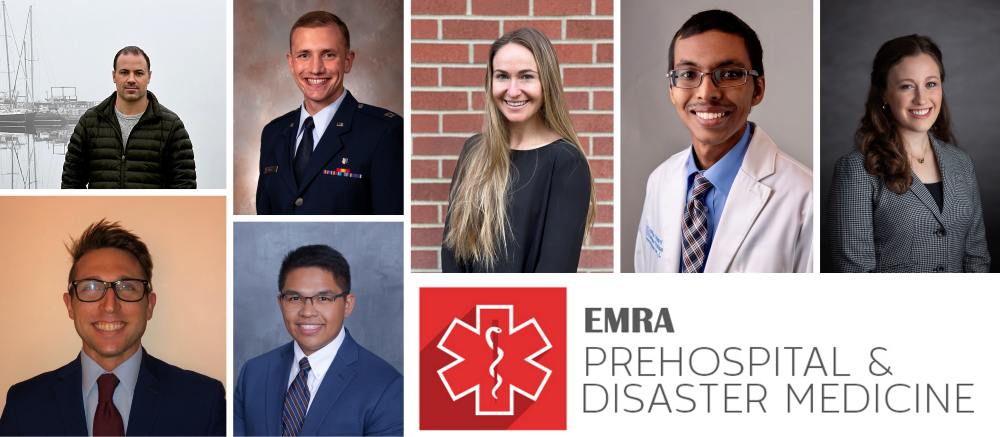Looking Your Best for Your Emergency Medicine Department
- Preparation is the key to looking your best for your emergency medicine rotation. There are many ways to prepare yourself prior to entering the doors of the ED for your first shift.
- Starting as a first or second year student, join your school's Emergency Medicine Interest Group (EMIG). This will allow you to get to know students interested in EM, as well as the residents and staff of local EDs. Also, join national organizations (such as EMRA and ACEP) and attend national conferences to better familiarize yourself with the field.
- Whenever the opportunity arises, participate in workshops. This will give you early training and experience with suturing, casting, splinting, ultrasound, etc. When the staff asks you if you have ever sutured, you can confidently say "YES!"
- Pursue any opportunity to do research or shadowing in the ED where you will rotate. This is a great way to see how the department runs prior to rotating there. Pay attention to which staffs are in which color scrubs (nurses vs. tech's etc), what paper-work needs to be done, what codes you should know, where to find supplies, and what constitutes the medical student's role in the department.
- Another option for familiarizing yourself with the ED is to do your surgery clerkship or a trauma surgery elective at the same hospital as where you will rotate for EM. While on these rotations pay particular attention to the activities of the staff and the interactions with medical students on their EM rotation. A full effort while on this rotation will be noticed.
- Take as many required clerkships as possible prior to scheduling your EM month. Ideally you should be finished with your requirements, but if this is not possible you should at least have internal medicine, surgery, pediatrics, and OB/GYN. You will feel much more comfortable seeing any patient who walks in the door with this background.
- In the weeks or months before your rotation, ask many questions of your EMIG peers who have rotated in the department. If you don't know any students, ask the rotation coordinator if they can give you the email address of a student you could contact prior to your rotation. Use these peers as a resource to avoid any surprises regarding your responsibilities, such as the numbers of patients you should be seeing per shift, the preferences of staff /residents to whom you will be reporting, and any other information they wished they had known prior to rotating in the department.
- Do some reading and preparation prior to starting your rotation (see the pearl on Reading for your EM rotation). Obtain a copy of, and familiarize yourself with Emergency Medicine's Top Clinical Problems (available on the EMRA website's bookstore). Always carry this resource in your pocket. Other great resources can be found on EMRA’s website.
- Get to know the faculty. Find out if any faculty is well-known nationally. If they are, ask to schedule a shift or two with them so you are able to obtain a letter of recommendation at the end of the rotation. Choose an advisor or a staff physician to work several shifts with, if this option is provided for you. This allows them to get to know you, which will help you with not only your grade, but will come through in your letters of recommendation.
- Identify residents who can later serve as mentors in the residency application/selection process. If your department does not have an EM residency, consider signing up with EMRA’s Resident Mentorship program. More info can be found here.
- Get to know the ancillary and nursing staff, as these staff members are the key to making your experience, indeed the whole department, run smoothly. Familiarize yourself with the radiology department, staff and residents as they will be a valuable resource. It shouldn’t need to be said, but remember to be nice and respectful to these people. Not only do they deserve it, but they can be incredibly useful as a resource while in the emergency department. You would be surprised how a negative comment from a beloved nurse or tech can make it back to the clerkship, or program, director.
- When you start your rotation, come early, stay late, and see as many patients as possible. Don't "cherry-pick" specific chief complaints - see patients in the order they arrive like everyone else. Constantly follow-up with your patients and always do your patients’ scut-work (paperwork, splinting, suturing, pelvic exam, etc). This will demonstrate that you are a team player.
- This one shouldn't be hard if this truly what you want to do: be energetic and have a positive attitude. View every patient as an opportunity to learn. A positive attitude will take you far, and your attendings will notice.
- Join the residents/staff after a shift if they are going out to get something to eat or drink. This gives you an opportunity to see how the staff and residents relate outside of the department. They will get to know you more personally and want you as a member of their team.
Contribution: 11/05
Maria Neuner, MSIV
University of Minnesota Medical School
EMRA Medical Student Council
Reviewed/Edited: 1/09
Elliot Pennington, MSIV
University of Missouri School of Medicine
Vice-Chair, Medical Student Governing Council
Related Content

Aug 25, 2017
Your Home
The Emergency Medicine Residents' Association EMRA is the voice of emergency medicine physicians-in-training and the future of our specialty and the largest and oldest independent resident organization in the world. EMRA was founded in 1974 and today has a membership over 18,000 residents, medical students, and alumni.






